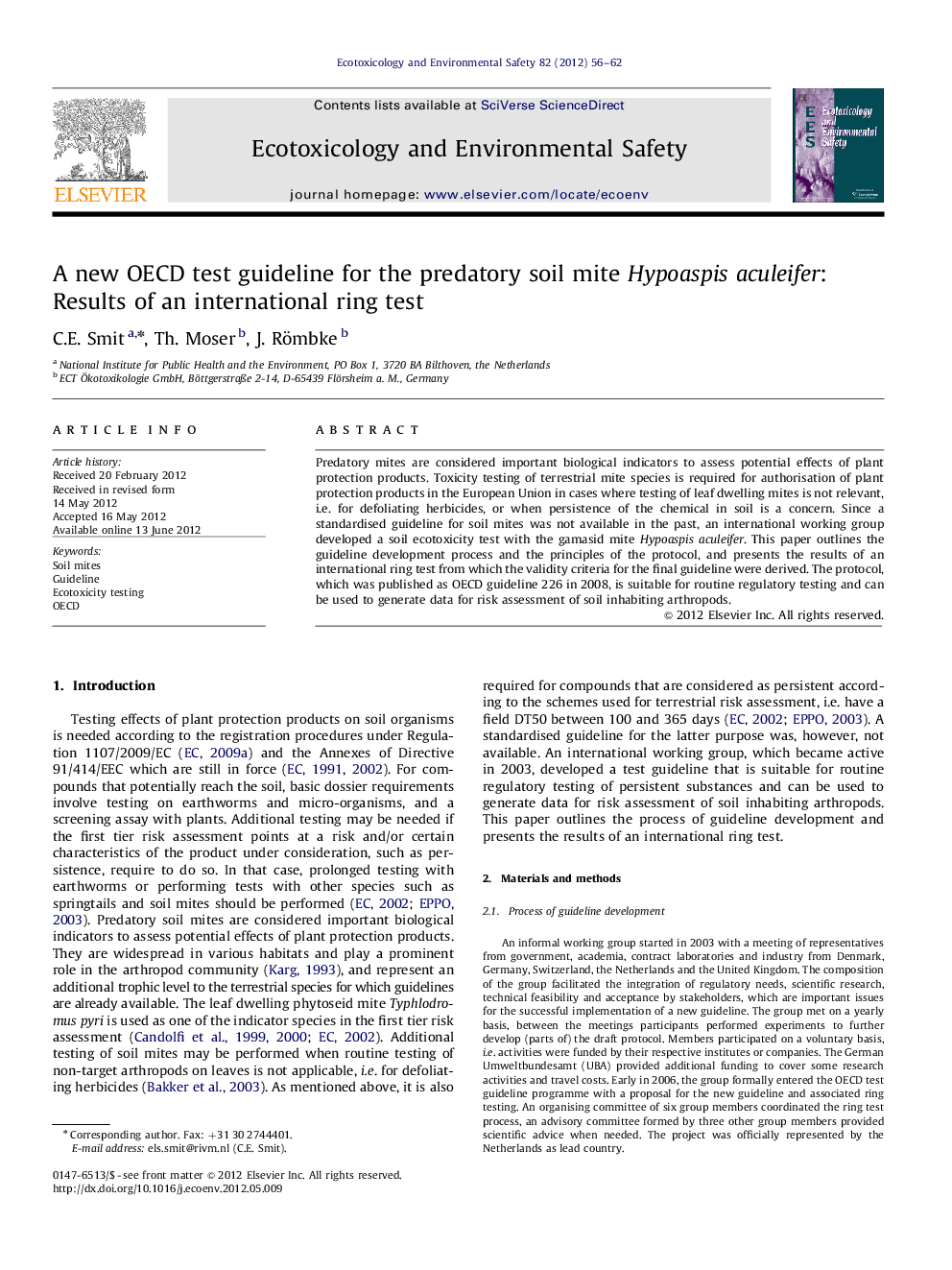| Article ID | Journal | Published Year | Pages | File Type |
|---|---|---|---|---|
| 4420849 | Ecotoxicology and Environmental Safety | 2012 | 7 Pages |
Predatory mites are considered important biological indicators to assess potential effects of plant protection products. Toxicity testing of terrestrial mite species is required for authorisation of plant protection products in the European Union in cases where testing of leaf dwelling mites is not relevant, i.e. for defoliating herbicides, or when persistence of the chemical in soil is a concern. Since a standardised guideline for soil mites was not available in the past, an international working group developed a soil ecotoxicity test with the gamasid mite Hypoaspis aculeifer. This paper outlines the guideline development process and the principles of the protocol, and presents the results of an international ring test from which the validity criteria for the final guideline were derived. The protocol, which was published as OECD guideline 226 in 2008, is suitable for routine regulatory testing and can be used to generate data for risk assessment of soil inhabiting arthropods.
► We describe the development and ring testing of a new OECD test guideline for soil mites. ► The test adds a potentially sensitive test system to the existing terrestrial ecotoxicity tests. ► The test improves the terrestrial risk assessment, in particular for acaricides.
